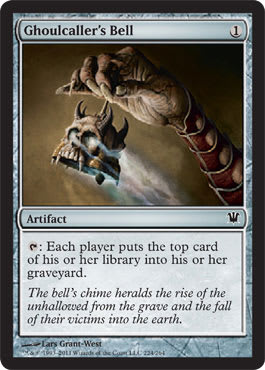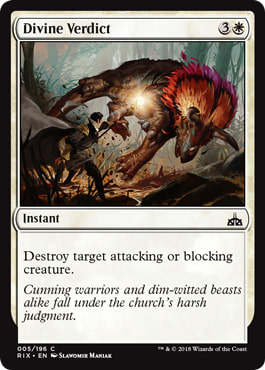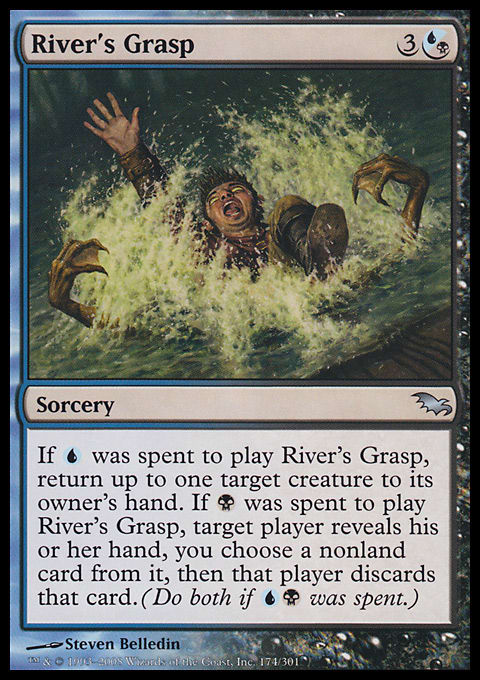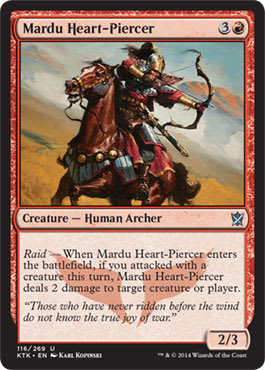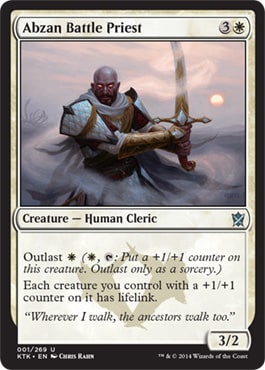Trading Magic cards is now easier than ever before. With Pucatrade now fully established, with eBay past auctions being easily searchable on phones, with TCGplayer’s midpoint values, and with a mix of CoolStuffInc, Channel Fireball, and StarCityGames, players will be able to pinpoint a card’s value pretty perfectly if the card is near mint. It just takes time to nail out that specificity for a trade. Do so for a ten-card trade, and often, the searching outweighs the actual trade. We’re really only missing an app that can look at card and determine a card’s condition. I figure that’s less than five years away as well.
Other aspects of the game based on a collectible matrix aren’t as easily ascertained. What exactly is a crimp worth?

There isn’t exactly a crimp database.
There also isn’t a source to easily check weird misprints like the one below. The best we have is to call up Keith and ask him his professional opinion.

Image via MagicLibrarities.com
Original art—that is, the art that is located on the physical Magic cards—is a bit more difficult to value than just looking it up or calling up Keith. Speaking of which, I should put him on speed dial.
Original art in Magic is a known commodity, and the art has incredible value with iconic images that instill people with nostalgia and happiness from the storytelling quality behind the image. While original art doesn’t have a complete catalogue raisonne built for its art yet—finding all the known quantities—but in time, it will.
For the time being, we just have some loose rules to follow. This article will explain them.
Connoisseurship
A lot has changed since I wrote about the real cost of art, over three years ago. The ability to tell almost instinctively who painted a picture is defined as connoisseurship and helps to identify contemporaries of an artist, therefore determining quality. To determine price, you need to know what the art is, where it stands, and who is comparable.
For example, were I to place these two artworks next to each other, they’re actually quite similar in style and quality. They are created by two different artists, but the style alone might have been nailed out over Red Bull and midnight Fruit Loops in the same workshop.
 |  |
While the creation date between these two artworks is well over ten years, you can tell that Donato Giancola and Volkan Baga have similar tendencies. Since Volkan studied under Donato, it becomes more obvious. They’re also living masters—others’ words, not mine.
Where connoisseurship is helpful, in placing an art to a quality standard of a known artist, is when you see these two images that seems similar.
 |  |
As Dan Dos Santos only has a few more than dozen Magic artworks, it’s harder to tell that Lindsey Look, formerly Messecar, studied under him. In short, how they handle light is more similar to one another than Donato versus Volkan or Steve versus Raoul or Lars versus Kev. They are on the same wavelength. We just see the Lion's Eye Diamond as better because the card is mechanically, in the game, better.
Once you start really looking at art, you begin to see resemblances even in artists who don’t know each other and haven’t worked together, but who bring similar elements into creation.
Notice the smoke delicateness, the smoky background, and the strong usage of light on the edge of the things in the pieces. The big difference in person is that Lars works huge and Kev has a certain yellowish tinge he loves using as backgrounds. They’re also both fantastic artists.
I love finding parallels with artists. They’re contemporaries. Some of it is because Jeremy Jarvis and his art-director squadron choose artists with similar styles, but others, well, they begin to gravitate toward really great works. This is often unconscious but prodded via the style guide and artists selection.
Steve and Raoul are near the top of incredible in today’s Magic art environment. Look at the water usage by Steve, and compare to Raoul’s. They didn’t study under each other, but some techniques feel similar.
 |  |
Can you tell if they compared notes on these Plains depictions? Or did they just receive great references in the style guide? It really looks like the same studio painted them but that they just chose different things to focus on. When it’s good, it’s great, and we have visually immersive and incredible landscapes. When incredible artists receive commissions, your chocolate gets mixed with peanut butter, and everyone wins.
 |  |
Hell, even look at their treatment of water. Notice the slight purples in there? Delicious.
Getting It All Sorted
To begin looking at what the art is and how much it costs, you need to ask yourself some questions. These are the things that people omit when yelling about what something is worth on an online forum, using the phrase, “I feel this is . . . ” as justifications. Building a case for support is part of good provenance research, yes, but it also factors into price enormously.
Things to ask yourself when looking at an artwork’s price:
- What is the card?
- Mythics and rares are worth more if played in tier-one decks.
- Basic lands are worth less than nonbasics, generally, even if the nonbasic isn’t played much.
Often, the best arts are on cards that are only drafted. Sadly, this hurts their original-art prices.
- Who is the artist? Fame helps.
- Who is similar to this artist? See above.
- Is the price listed? Remember for British artists how much more pound sterling is!
- Does the similar, other artist have a price list?
- Does the artist have his or her list of available originals on OriginalMagicArt.com?
- What is the figure? Is it an iconic thing like an angel or dragon with an established collecting base?
- How big is it? Below is a rough baseline chart. Art should never be cheaper than these values currently—not anymore!

- Does someone else want it? Bidding wars aren’t awesome. Knowing the community and having a very specific want list allows for folks to help each other out—instead of stepping on their toes. It’ll still happen, but art collecting as collaborative hobby raises all boats.
- Asking price is not always selling price. Look at eBay auctions for originals with Buy It Now listings. If they’re still there a month later, they’re overpriced for the current market.
- Is there a chance this will go to auction? If so, a premium could and should immediately be applied in order to not prevent the artist from maximizing revenue. However, eBay bidders backing out is a thing when a sum is run up too high. Also, losing double-digit percentages to selling it isn’t always awesome if you’re not Chris Rahn.
Use the Maths
As the original art game is exploding in popularity, trying to find a good pricing measure doesn’t really exist in the market for new traditional painting artists. I have a few ways to narrow the focus, but even then, there’s some spit-balling that happens. I often ask the questions above, seemingly useless to folks, but while I ask, I’m thinking of salient examples to narrow a focus. After that happens, I have to break out a calculator and Microsoft Excel.
I’ve heard that some non-Magic artists use a basic formula to price an artwork as follows:
That is still often Evan Erwin Magical Christmas Land. Often, artists won’t factor in a strong enough percentage of expenses such as keeping a studio, marketing expenses, and upkeep. Even then, boy it would be nice to have all those hours counted, but often, even a reasonable wage doesn’t often work for that calculation. This is why I listed the baseline above. Art should be more, but never less than those guidelines in the open market.
I’ve yet to see any artists who charge per square inch. What I’ve found more useful is the equation below:
This is why I ask all the questions. I find out whom an artist is most similar to—say, Volkan Baga and Donato Giancola—and then take a deep dive into pricing.
It would be a lot easier for buyers to understand, as artists could focus in on hard costs and scale appropriately. If it’s an unplayed common, it’s $5 per square inch. If it’s a highly played mythic rare or Planeswalker, it’s $10 (or more!) per square inch.
| 5 × 7 = 35 square inches | 8 × 10 = 80 square inches |
|---|---|
| $5 in × 35 = $175
$7.50 in × 35 = $262.50 $10 in × 35 = $350 $15 in × 35 = $525 $30 in × 35 = $1,050 $50 in × 35 = $1,750 |
$5 in × 80 = $400
$7.50 in × 80 = $600 $10 in × 80 = $800 $15 in × 80 = $1,200 $30 in × 80 = $2,400 $50 in × 80 = $4,000 |
| 11 × 14 = 154 square inches | 16 × 20 = 320 square inches |
| $5 in × 154 = $770
$7.50 in × 154 = $1,155 $10 in × 154 = $1,540 $15 in × 154 = $2,310 $30 in × 154 = $4,620 $50 in × 154 = $7,700 |
$5 in × 320 = $1,600
$7.50 in × 320 = $2,400 $10 in × 320 = $3,200 $15 in × 320 = $4,800 $30 in × 320 = $9,600 $50 in × 320 = $16,000 |
For example, let’s look at Chris Rahn’s Ajani Steadfast sold on eBay for $14,544.99. It was a 20" × 22" painting, oil on hardboard. At 440 square inches (20 × 22) per square inch, the piece was worth $33.06 per square inch in the open market! That’s an outlier, clearly, but you can see how the scaling occurs.

Grabbing Chris Rahn’s originals still on Original Magic Art produces the following:
- Abzan Battle Priest 14" × 18" (Framed) $3,500 ($13.89/in2)
- Ainok Bond-Kin 14" × 18" (Framed) $1,500 ($5.95/in2)
- Mistfire Weaver 14" × 18" (Framed) $2,500 ($9.92/in2)
The Bond-Kin is a common, and the other two are uncommons. At 252 square inches, notice the pricing per square inch. Savage Knuckleblade is a similar size, but it was sold on eBay for $2938; it was unframed, is a rare card, and had thirteen bids. I love seeing data and trying to understand how that all shook out. Magic art appears to have some sort of correlation of $5 to $10 per square inch, at first glance, using one artist.

Savage Knuckleblade 14" × 18" (Unframed) $2,938 ($11.66/in2)
I plan on examining this price per square inch more, and I am already finding that lands, landscapes, and environments are skewing numbers, as they’re often painted larger. I’ll have to take that into account, too! It’s something I’ve sketched in notebooks as a personal guide. If something is above that, I often try to find out why. Maybe it won an award. Maybe it means something to the artist's spouse. Maybe the artist discovered something while painting it.
By having a guide, you can understand the artist a little better by using data from the open market all while encouraging larger, museum-quality original paintings as the ideal. Art used to be so cheap, yes, but it was also much smaller. It had to fit on the Wizards of the Coast scanner!
I hope creating larger paintings is something we as collectors and patrons can urge artists to do, as the profit margin is better for them, and we get a larger, more impressive piece. Everyone, including American capitalism, wins. There is a declining return on an amazing, $50-persquare-inch artwork as being too high for the game’s demographic, but I don’t feel that’s even out of reach. If a painted Planeswalker can regularly demand at least $5,000, painting large skews to be always better.
Try it out the next time you’re at a convention. It’s illuminating. I hope you learned a little something about art pricing, and I encourage you to do some math to understand how an artist prices a work. And now I wait for artists to poke my theory with a stick. I look forward to the conversation!
-Mike
P.S. Winter is soon here, so change your furnace’s air filter to protect your art!













